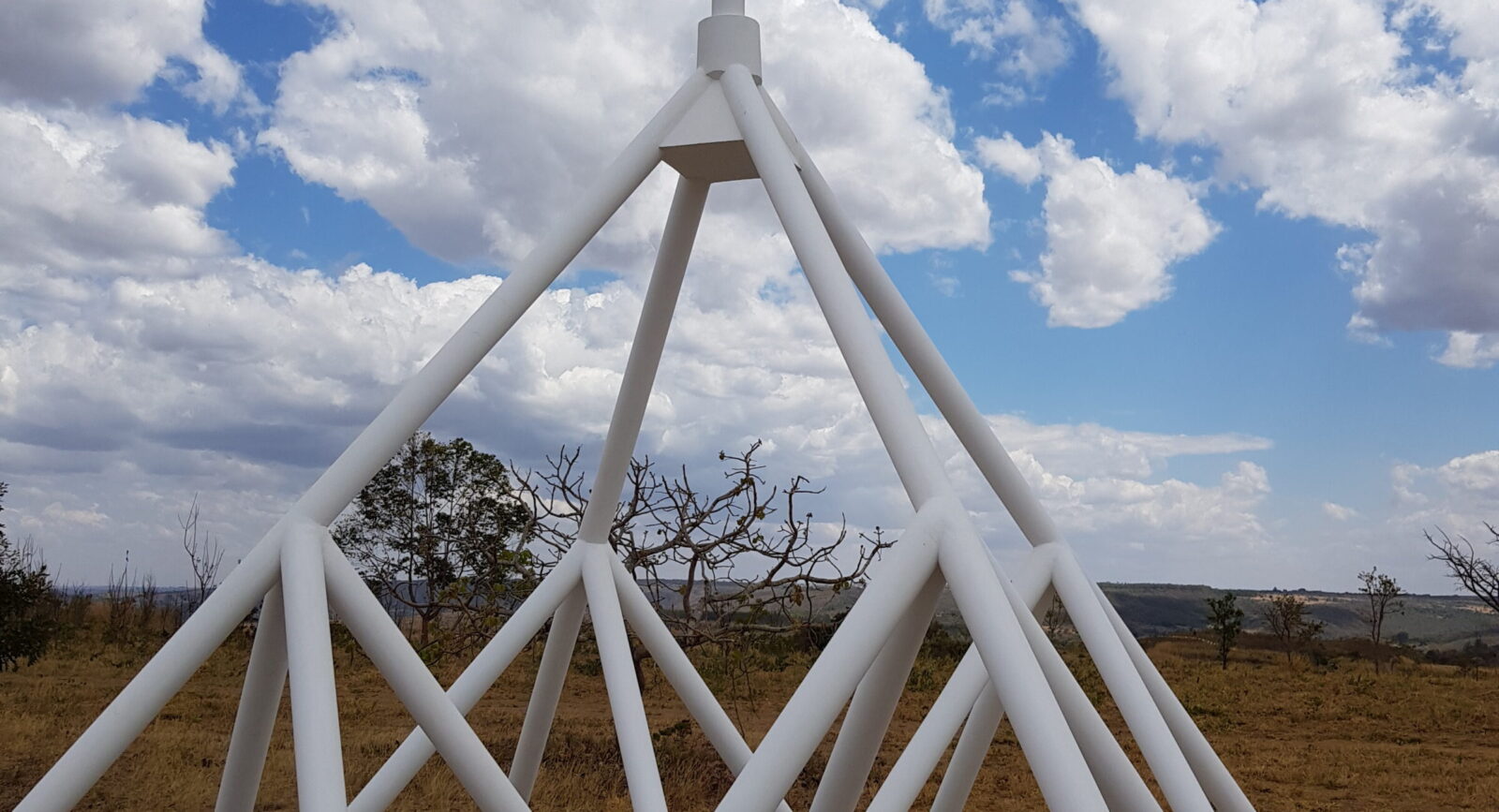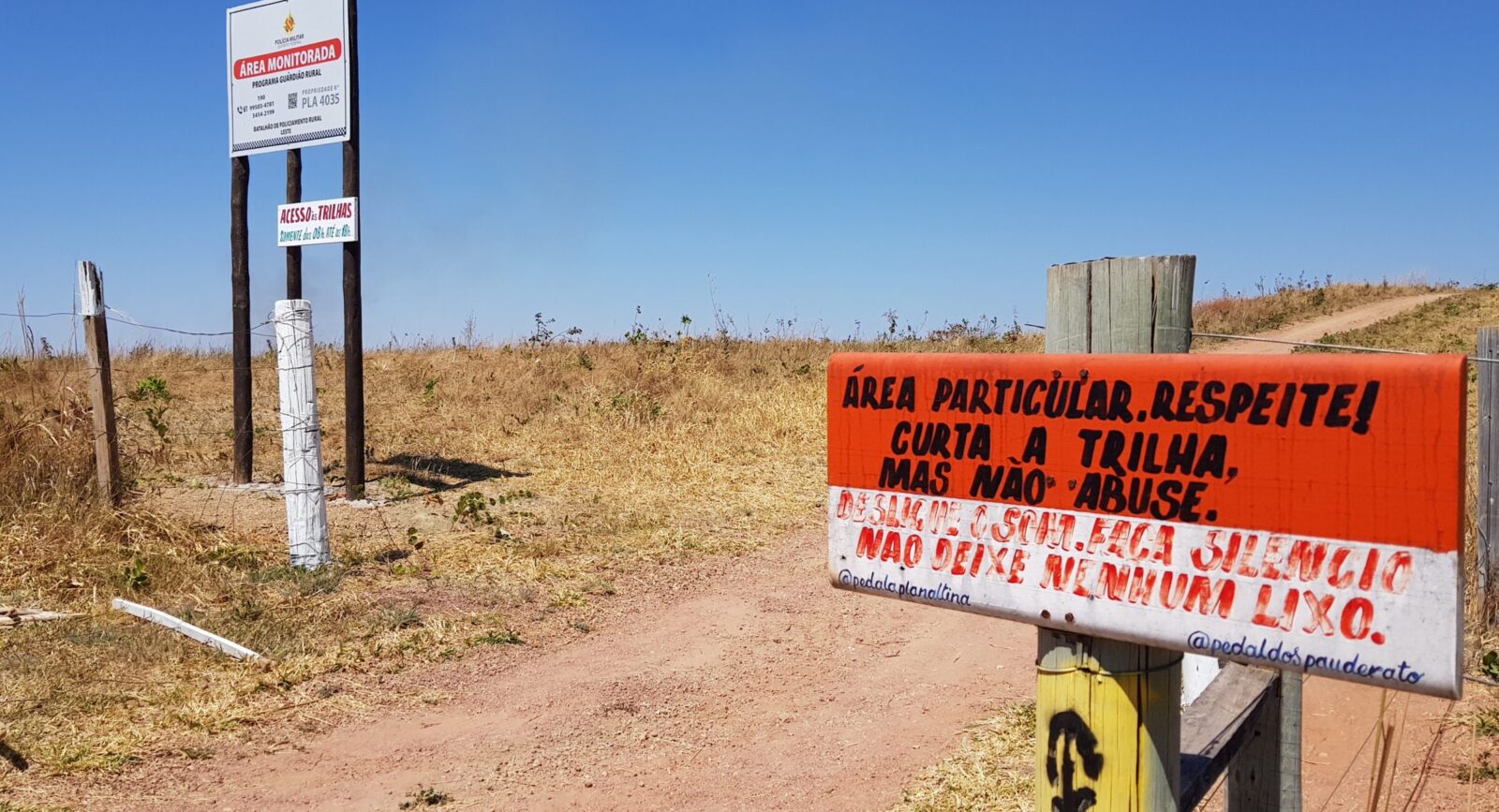The Democracy of the Future and the Dream-Vision of Dom Bosco
1. Introduction
In the book What Is Wrong With Politics? Bases for a True Democracy, we seek to demonstrate, in short, that what we have today in Brazil and in the world in general are not legitimate forms of democracy, but forms of plutodemagogicracies. In other words, what we see are systems of political representation in which the power of those who hold large material resources (pluto) and those who deceive the population with false solutions to their problems (demagogy) largely predominate.
Now, a true democracy must be, in short, “the government of the people, by the people and for the people”. And as it is quite evident, in these systems of plutodemagogicracies, the government is of the people, by the people, but it is never aimed at meeting the needs of the people, that is, it is not a government for the people.
Likewise, in this work we seek to present the bases for a true democracy, which are: 1) freedom; 2) equal opportunities, especially in elections (choice of government main officials, and also in other great social institutions); 3) the harmony between social roles and responsibilities with human levels of consciousness and capabilities. We also outline a model for choosing representatives that we call true representative democracy, or Democracy of the Future.
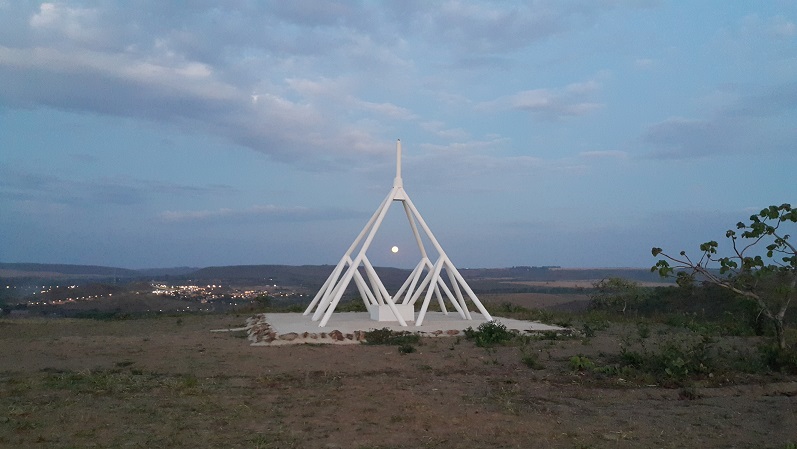
Although the approach of the book makes comparisons of its explanations with the main works of the great religious traditions of the world, its approach is mainly scientific, supported by texts and research of eminent social and political scientists, such as Philip Converse, C.B. Macpherson, Maurice Duverger and Ernst F. Schumacher.
Therefore, it is natural that the question arises: – what is the relationship that can exist between these scientific foundations for a true democracy, and the presented model of representative democracy of the future, with the dream-vision of Dom Bosco? A relationship that is suggested on the plaque in front of the monument dedicated to schematically presenting the model of representation of the Democracy of the Future, next to the monument of the Fundamental Stone of Brasília.
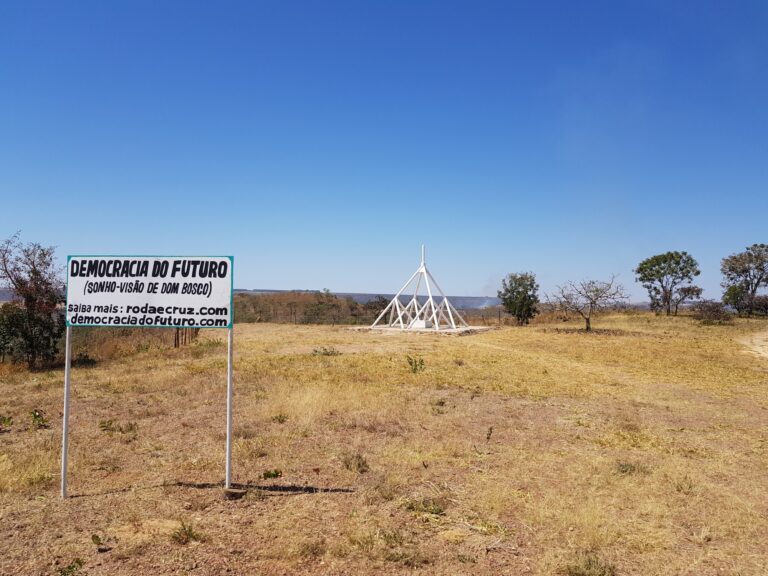
This dream-vision of Dom Bosco has been closely associated with the foundation of Brasília, where was constructed a beautiful chapel (on the south shores of Paranoá Lake) dedicated to Dom Bosco and to his dream-vision, considered prophetic by his admirers. For those who do not know such dream-vision, a brief presentation is in order.

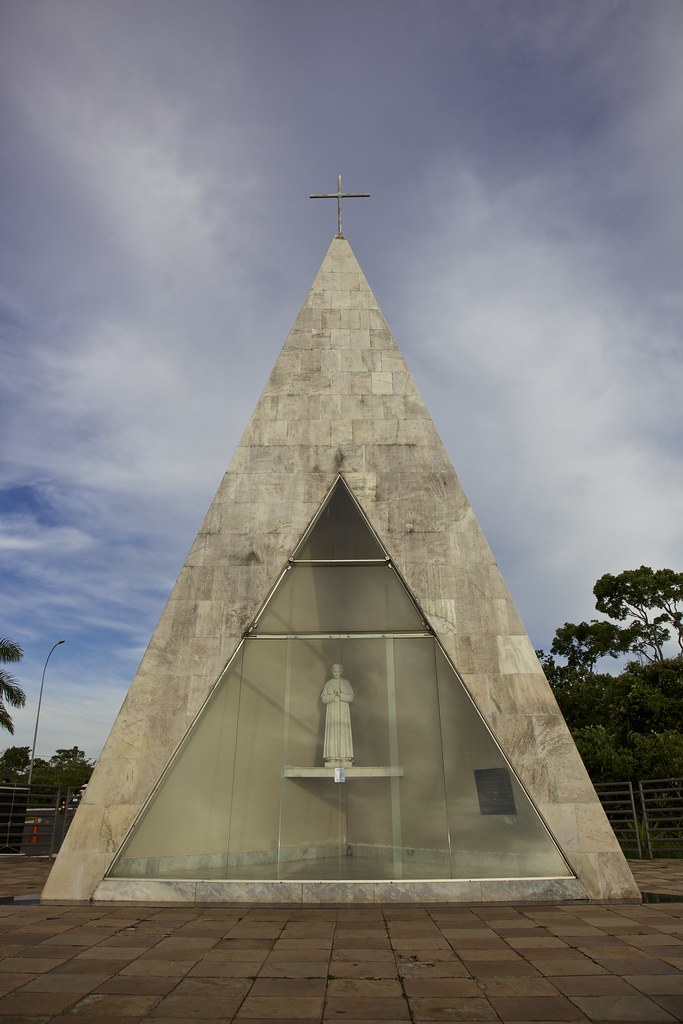
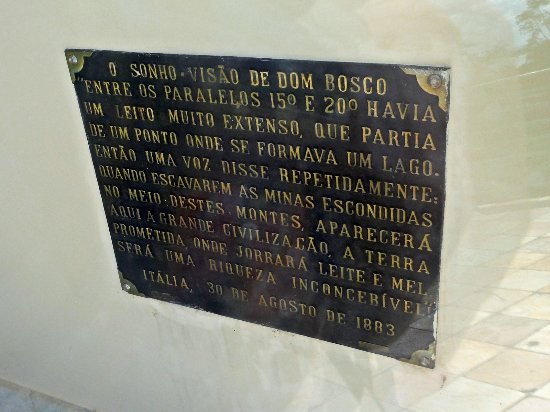
2. A Synthesis of Dom Bosco’s Dream-Vision
This summary was largely taken from a publication by UCB (Universidade Católica de Brasília), which can be read in full (document in Portuguese language) at the following address: https://ucb2.catolica.edu.br/portal/noticias/um-sonho-profetico-de-dom-bosco/
On April 21, 1960, Brazil inaugurated its new capital, Brasília, an idea that has existed for a long time, as demonstrated by the monument Pedra Fundamental de (Fundamental Stone of) Brasília, from 1922, aiming to internalize the development of the country.
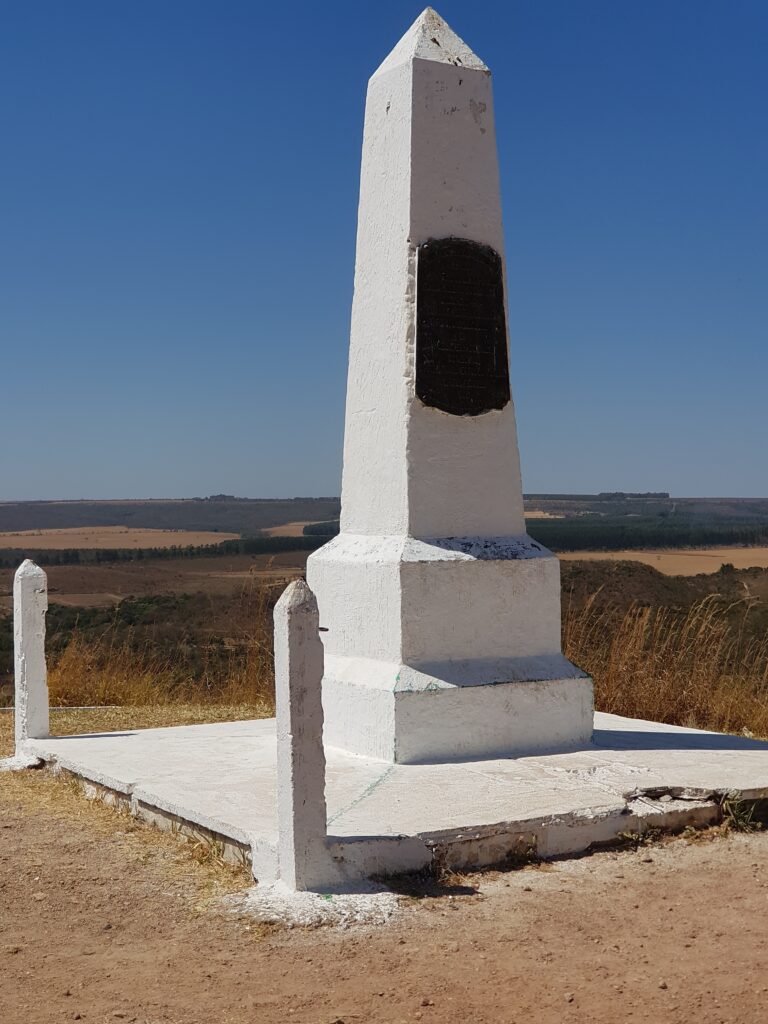

Many texts, speeches, and articles, including the Brazilian and foreign press, since the foundation of Brasilia were associating the dream-vision of Dom Bosco with the foundation and the destiny of the new capital. It is not appropriate here to bring the entire narrative of this dream-vision because it is too large. It occupies well 10 pages in the “Biographic Memoirs of Dom Bosco”.
It should be noted from the outset that, according to the document published by the Catholic University of Brasília: “It is essential to note that the entire prophecy is, in itself, obscure in its utterance, using generic terms and imaginative, figurative language in its expression”. This aspect of the dream-vision, of course, allows it to be given different interpretations. Even so, we must say that the contours of the predictions contained in Dom Bosco’s dream-vision are clearly situated in time, and above all in space.
The dream-vision dates to 1883. Dom Bosco reported it that year at a meeting of the General Assembly of the Salesian Congregation. Father Lemoyne, who was collecting the Saint’s memories, transcribed it immediately, submitting it to Dom Bosco’s correction, who examined it carefully, adding and modifying it. It was published on pages 385 to 394 of volume XVI of Dom Bosco’s “Memorie Biografiche”, the first edition of which was published in 1935 (E. CERIA, Memorie Biografiche di S. Giovanni Bosco, vol. 16, Societa Editrice Internazionale, Torino, 1935).
3. This Is How Dom Bosco Begins the Narrative
“On the night before the feast of Santa Rosa de Lima, August 30th, I had a dream. I realized that I was sleeping, and at the same time I seemed to be running at full speed, to the point that I was tired of running, talking, writing, and exerting myself in the performance of the usual occupations. While I was hesitating whether it was a dream or reality, it seemed to me that I had entered a hall where many people were talking about various subjects.”
And Dom Bosco reproduces at length the subject of the conversation, from which we highlight only a few passages:
“(…) In the meantime, a young man of sixteen approached me, amiable and of superhuman beauty, all radiant with a lively light, brighter than that of the sun (…)”.
This kind and radiant guide accompanied him throughout the mysterious journey. This one introduces himself as a friend of him and of the Salesians, and says that he comes in the name of God:
“– Sit down at this table and pull this rope.
There was, in the middle of that hall, a table, on which a rope was wound. I saw that this rope was marked with lines and numbers, like a tape measure. I realized later that (…) it was located at South America, exactly above the Equator, with the numbers printed on the rope corresponding to the geographic degrees of latitude (…)”.
What follows is the narration of the overall view of South America, as explained by Dom Bosco:
“I observe that then I saw everything, as if in miniature. Then, as I shall say, I saw everything in its real grandeur and extent. It was the degrees marked on the rope corresponding exactly to the geographic degrees of latitude that allowed me to record in my memory the successive points I visited, traveling in the second part of the dream. (…) Those mountains were the Cordilleras of South America and that sea the Atlantic Ocean (…)”.
The vision continues, showing Dom Bosco how he would be able to lead so many peoples to the flock of Christ, which was his greatest objective, as head of the religious Order he founded:
“Do you want to see what will happen next? Come here. (…) That saying, he took from his pocket a map, which showed the diocese of Cartagena (Colombia). It was the starting point.
As he looked at the map, the machine beeped and the train set in motion. Traveling, my friend talked a lot, but I couldn’t understand everything because of the noise of the train. However, I learned beautiful and entirely new things about astronomy, navigation, meteorology, about the fauna, flora, and topography of those places, which he explained to me with wonderful precision. (…)
I was looking through the car windows and discovering various and stupendous regions. Woods, mountains, plains, rivers so big and majestic that I couldn’t believe they were so mighty, far from the mouth. For more than a thousand miles we coasted through a virgin forest, unexplored even today. My eyes had a wonderful visual power, finding no obstacles to stop them from reaching those regions. (…)
But it wasn’t all. Between the 15th and 20th grade, there was a rather extensive cove, which started from the point where a lake formed. Then a voice said repeatedly: – when the mines hidden in the midst of these mountains are caved, the promised land will appear here, in which flows milk and honey. It will be an inconceivable wealth.” (emphasis ours)
4. The Location and What Did Dom Bosco See?
Dom Bosco located the strip comprised by the 15th and 20th parallels, between the Andes and the Atlantic Ocean. Exactly between the 15th and 16th parallels the new capital of Brazil was located.
Although the object of his dream-vision is not exclusively or even explicitly Brasília, we can say that Dom Bosco saw, in 1883, what today, in part, is already the reality that we can observe.
That Dom Bosco would have associated this dream-vision with Brazil is beyond doubt. We can understand this better if we remember that, on July 14, 1883, a few days before this dream-vision, the first Salesians landed in Brazil to start the first foundation of their Order in that country. All of Dom Bosco’s concern was, in those days, focused on Brazil. Fr. Filipe Rinaldi, the third successor of Dom Bosco in this Order, testifies that he had surprised him in his room, contemplating with emotion an atlas in which he focused precisely on Brazil.
In the dream-vision that we have briefly examined, Dom Bosco covered the development of his religious work, together with the material progress of Brazil, to the extent that it allowed him to remember (translate to the physical brain) the impressive vision in the psychic field, in this case at the level called “astral”, helped as he was (as if he were a guest: “Sit at this table and pull this rope”) by a being of extraordinary light (“kind and of superhuman beauty, all radiant with living light”, brighter than the sun (…) to enter a hall”).
As for the progress of Brazil, we already have the inauguration of the new capital and what is just the dawn of what, at best, are possible future great developments, of a social reality that may someday come to be associated with “the promised land will appear here, in which flows milk and honey. It will be an inconceivable wealth.”
While the growth of the Salesian work, as well as that of other Christian religious Orders, became, with exact temporal correctness, a clear reality and, we may add, well within the 120-year period that was anticipated by the wonderful radiant young man who led and taught him, throughout his dream-vision.
5. Our Interpretation of the Dream-Vision in Relation to the Democracy of the Future
On our websites and pages, as well as in our writings, we make it quite clear that the appearance here of the “promised land, in which will flow milk and honey”, and where there will exist “an inconceivable wealth” (using the evidently allegorical language of Dom Bosco), will not have the possibility of becoming a reality without a great intellectual reform in the metaphysical and ethical field, and without the consequent advent of new forms of great socio-political institutions, inspired by a true metaphysics and its logically related ethics.
In short, we see that the world lacks a metaphysical and ethical vision that is both truly catholic and truly scientific. This seems a contradiction to materialist thinkers, and to thinkers who follow the current dominant conceptions in the great religions, however, for the metaphysical and ethical vision that underlies the Democracy of the Future, this is a clear necessity.
In this sense, we present below some quotes to offer an idea of the metaphysical vision to which we are referring, and after those quotes, we continue with our interpretation. This metaphysical vision can be better known on sites such as: The Perennial Philosophy; Universal Brotherhood as a Law; Humanitarianism; Anna Kingsford Site; The “New” Gospel of Interpretation; Buddhist Christianity; The Wheel and the Cross; and Ideas for a Better World.
Quotations:
Mystical Sense, and Not the Literal Sense
“Such was the first intimation (…) given us of the truth subsequently revealed in plenitude, – the presence in Scripture of a mystical sense concealed within the apparent sense, as a kernel in its shell, which, and not the literal sense, is the intended sense.” (Edward Maitland. The Story of Anna Kingsford and Edward Maitland and of the New of Interpretation, p. 53; emphasis added)
(The) Interpretation of Your Bibles
“That which you need on Earth is the interpretation of your Bibles, and of all the Scriptures which contain the hidden wisdom, the mystery of which St. Paul so often speaks as existing from the foundation of the world. [As in Romans 16:25]” (Edward Maitland, editor. A Message to Earth, p. 69. See Selected Texts, Quotes and Glossary; emphasis added)
Once the Veil of Symbolism is Lifted All Churches Are Akin, and the Basic Doctrine of All Is identical
“Once the veil of symbolism is lifted from the divine face of Truth, all Churches are akin, and the basic doctrine of all is identical (…). Greek, Hermetic, Buddhist, Vedantist, (1) Christian – all these Lodges of the Mysteries are fundamentally one and identical in doctrine. (…)
We hold that no single ecclesiastical creed is comprehensible by itself alone, uninterpreted by its predecessors and its contemporaries.
Students, for example, of Christian theology will only learn to understand and to appreciate the true value and significance of the symbols familiar to them, by the study of Eastern Philosophy and Pagan Idealism
For Christianity is the heir of these, and she draws her best blood from their veins.
And, forasmuch as all her great ancestors hid beneath their exoteric formulas and rites – themselves mere husks and shells to amuse the simple-minded – the esoteric or concealed verities reserved for the initiate, so also she reserves for earnest seekers and deep thinkers the true interior Mysteries which are one and eternal in all creeds and Churches from the foundation of the world.
This true, interior, transcendental meaning is the Real Presence, veiled in the Elements of the Divine Sacrament: the mystical Substance and Truth figured beneath the Bread and the Wine of the ancient Bacchic orgies, and now of our own Catholic Church.
To the unwise, the unthinking, the superstitious, the gross Elements are the objects of the rite; to the initiate, the seer, the son of Hermes, they are but the outward and visible signs of that which is ever and of necessity, inward, spiritual, and occult. (Edward Maitland, quoted by Samuel Hopgood Hart, in his Preface to the Fifth Edition, pp. xii-xiii, to the work The Perfect Way. Quotation from The Life of Anna Kingsford, Vol. II, pp. 123-124; emphasis added)
Ex Oriente Lux: Although Derived from the East, Christianity Is Modeled in Greco-Roman Mythology
“THE Christian Faith is the direct heir of the old Roman faith. Rome was the heir of Greece, and Greece of Egypt, whence the Mosaic dispensation and Hebrew ritual sprang.
Egypt was but the focus of a light whose true fountain and centre was the Orient in general – Ex Oriente Lux. For the East, in every sense, geographically, astronomically, and spiritually, is ever the source of light.
But although originally derived from the East, the Church of our day and country is modeled immediately upon the Greco-Roman mythology, and draws thence all its rites, doctrines, ceremonies, sacraments, and festivals.
Hence the exposition to be given of Esoteric Christianity would deal more especially with the mysteries of the West, their ideas and terminology being more attractive and congenial to us than the inartistic conceptions, the unfamiliar metaphysics, the melancholy spiritualism, and the unsuggestive language of the East.
Drawing its life-blood directly from the pagan faith of the old Occidental world, Christianity more nearly resembles its immediate father and mother than its remote ancestors, and will, therefore, be better expounded by reference to Greek and Roman sources than to their Brahminical and Vedic parallels.
The Christian Church is Catholic, or it is nothing worthy the name of Church at all. For Catholic signifies universal, all-embracing: – the faith everywhere and always received. The prevalent limited view of the term is wrong and mischievous.
The Christian Church was first called Catholic because she enfolded, comprehended, and made her own all the religious past of the whole world, gathering up into and around her central figure of the Christ all the characteristics, legends, and symbols hitherto appertaining to the central figures of preceding dispensations, proclaiming the unity of all human aspiration, and formulating in one grand ecumenical system the doctrines of East and West.
Thus the Catholic Church is Vedic, Buddhist, Zend, and Semitic. She is Egyptian, Hermetic, Pythagorean, and Platonic. She is Scandinavian, Mexican, and Druidic. She is Grecian and Roman. She is scientific, philosophic, and spiritual.
We find in her teachings the Pantheism of the East, and the individualism of the West. She speaks the language and thinks the thoughts of all the children of men; and in her temple all the gods are shrined.
I am Vedantist, Buddhist, Hellenist, Hermetic, and Christian, because I am Catholic. For in that one word all Past, Present, and Future are enfolded.
And, as St Augustine and other of the Fathers truly declared, Christianity contains nothing new but its name, having been familiar to the ancients from the beginning. And the various sects, which retain but a portion of Catholic doctrine, are but as incomplete copies of a book from which whole chapters have been torn, or representations of a drama in which some only of the characters and scenes have been retained.” (Anna Kingsford and Edward Maitland, The Credo of Christendom, pp. 94-96; emphasis added)
Bearing in mind the philosophical vision contained in these quotations, let us continue with our interpretation of Don Bosco’s dream-vision. To summarize the path of our interpretation, we can say that we tried to interpret this dream-vision according to what the apostle Paul wrote:
“You demonstrate that you are a letter from Christ, the result of our ministry, written not with ink, but with the Spirit of the living God, not on tablets of stone, but on tablets of human hearts. … He has enabled us to be ministers of a new [and eternal] covenant, not of the letter, but of the Spirit; for the letter kills, but the Spirit [a lucid or spiritual understanding] gives life.” (2 Corinthians 3:3-6; emphasis and square brackets ours)
In this way, we understand that Dom Bosco’s dream-vision needs to be interpreted, not with the eyes of the letter, but with the eyes of the Spirit, that is, with mystical or spiritual understanding. It is worth remembering that the word “mystic” comes from a Greek root meaning silence, that is, true prayer, meditation, and contemplation. Only in this way the interpretation can be “written with the Spirit of the living God, on tablets of human hearts.”
In the same sense, it seems clear to us that Dom Bosco’s dream-vision should not be interpreted literally, but as with all the great sacred scriptures, it needs to put aside the literal understanding and seek its true allegorical meaning.
Here, in the search for this true allegorical meaning of the dream, the aspect that seems decisive to us is that we do not interpret the “mountains” literally, but in their true allegorical sense within Christian symbology. Thus, according to the “New” Gospel of Interpretation, hills and mountains signify states of spiritual elevation, which are always grounded and guided by a life of true charity or love. For example, Moses talks to God on a mountain; Jesus undergoes his glorious Transfiguration on a mountain; Jesus passes through his most glorious yet Crucifixion on a mountain, and we have, among others, that wonderful passage from the Gospels which is the Sermon on the Mount:
5 And seeing the multitudes, he went up into a mountain: and when he was set, his disciples came unto him:
2 And he opened his mouth, and taught them, saying,
3 Blessed are the poor in spirit: for theirs is the kingdom of heaven.
4 Blessed are they that mourn: for they shall be comforted.
5 Blessed are the meek: for they shall inherit the earth.
6 Blessed are they which do hunger and thirst after righteousness: for they shall be filled.
7 Blessed are the merciful: for they shall obtain mercy.
8 Blessed are the pure in heart: for they shall see God.
9 Blessed are the peacemakers: for they shall be called the children of God.
10 Blessed are they which are persecuted for righteousness’ sake: for theirs is the kingdom of heaven.
11 Blessed are ye, when men shall revile you, and persecute you, and shall say all manner of evil against you falsely, for my sake.
12 Rejoice and be exceeding glad: for great is your reward in heaven: for so persecuted they the prophets which were before you. (Matthew, 5:1-12; emphasis added)
When interpreted in this way, “caving the mines hidden in the midst of these mountains” from which “an inconceivable wealth” can emerge means the elevation of consciousness in profound silence, meditation and contemplation, as the crowning of a life of charity or love, which is only where “the Christ in us, the hope of glory”, or “the living God in human hearts” can be lucidly and truly attained.
Only from this experience can emerge a really catholic metaphysics and ethics (not in the usual and wrong sense of the word) as well as a really scientific one (not in the common and degenerate sense of the word). And only from there can emerge a lucid and spiritual interpretation of the “bibles” of the great religions and of all the sacred texts of the world.
In the same way, as a logical necessity, only from there can new and just great social institutions be born, without which no “inconceivable wealth” will ever be possible.
Gold, silver, oil, precious minerals, however precious they may be, have never reached or will ever reach the lucid metaphysics necessary for a truly Catholic and scientific religion and ethics. And without this great intellectual reform, you will never see the emergence here (or anywhere else) of the “promised land, which flows milk and honey”, and where there will be “an inconceivable wealth”.
As we try to demonstrate in our websites and books, the catholic (universal) and scientific interpretation of the “bibles” of the world leads us to the existence of a Perennial Philosophy and its great natural Law of Universal Brotherhood. And these are the “rock” on which to build great, just, and competent social institutions. Among these great institutions, we have as the most important (since the other great institutions start from there) a true participatory democracy, or a true Democracy of the Future.

This Democracy of the Future, also logically and necessarily, will take the form of a pyramidal representation, in a cascade or inverted tree, as it is referred to in political science, and which is clearly represented in the monument next to the Fundamental Stone of Brasília. This is not a belief, but a logical necessity, because it is the only way to integrate the pillars, or ethical foundations, of a true democracy: freedom, equality of opportunity, and the harmony between functions and capabilities. And this ethics (new and eternal) is based on the principles of the Perennial Philosophy and its eternal and fundamental natural Law of Universal Brotherhood.
Before concluding this text, it is worth clarifying and emphasizing some points, especially in order to neutralize, however little, the misinterpretations that this text will inevitably deserve.
First, we must clarify that our interpretation of Dom Bosco’s dream-vision is presented under an experimental character, as an interpretive hypothesis, and not as a point from which we are certain of its correctness or veracity. In other words, it is possible that the allegorical interpretation that we are presenting, as a truly prophetic dream within the tradition of Christianity, and in the light of the “New” Gospel of Interpretation, as already written, is not applicable to this dream-vision of Dom Bosco.
On the other hand, we are stating, for the reasons already presented, that apart from this interpretation, this impressive dream-vision is not a prophetic dream and, therefore, may not be true in its predictions, as well as it may not be of high spiritual significance. This is for the simple reason that material riches, we repeat, will never be the basis of the “promised land”.
That said, the question may naturally arise as to what are the reasons (since we are not sure of our interpretation of this dream-vision) for making public this possible relationship of this dream with the Democracy of the Future?
The answer is that the presentation to the public of this possible relationship allows us, on the one hand, to present, even if in a synthetic and introductory way, the principles of true catholicity and true scientific that we affirm as fundamental elements for the great intellectual reform that must base the metaphysics and ethics of the new great social institutions, whose center is the Democracy of the Future. These principles are inherent in the Perennial Philosophy and in the natural Law of Universal Brotherhood, as well as in all non-degenerated religious traditions and in all Churches worthy of the name.
On the other hand, making this interpretation and this possible relation public allows us to offer the religious world in general – today impoverished by the domain of literal interpretations (and, therefore, idolatrous and materialistic) of its main sacred symbols – the opportunity to recognize the misconceptions that denigrate and that put religion in contradiction with true science (whose main characteristic is induction from experimental hypotheses) and with true philosophy (whose main characteristic is deduction from metaphysical hypotheses). And it allows us to offer a possibility that this great dream-vision of Dom Bosco is genuinely prophetic. This hypothesis is very likely to true, because spiritual, and not material riches will always be the basis of the “promised land, flowing with milk and honey”, and where there will be “inconceivable wealth”.
Just to reinforce these statements, let us consider the interpretation of another point in Dom Bosco’s statement, which we have repeatedly underlined, which is the question that it is an “inconceivable wealth”. This point, together with the question of the “mounts”, is presented to him in the dream-vision in the form of several repetitions, a fact that, in our view, makes this point one of the most important in all his remarkable dream-vision: “Then a voice said repeatedly: – when the mines hidden in the midst of these mountains are caved, the promised land will appear here, in which flows milk and honey. It will be an inconceivable wealth” (emphasis ours)
Oil, gold, silver, minerals, and precious stones, however valuable they may be, as has already been said, will never be the basis of the promised land, and they are riches which, however valuable they may be, are perfectly conceivable to human thought. The beatific or mystical vision, according to the accounts of the great mystics of all times and places, is a reality so exalted, so extra-ordinary, that human thought cannot conceive, cannot even imagine.
Again, this is not a belief, but a logical necessity, since thought is always a comparing, a making two, a fragmenting (that’s why the ancients called it di-alectics). And, more than that, thought is always a comparison of images and concepts, which are always allusions, or reflections of noumenal realities, and are therefore phe-nomena. Always a comparison of “photographs”, or “shadows”, as in the Allegory of the Cave by the great philosopher Plato. While the gnoseological faculty awakened by the beatific or mystical vision is a gnosis, it is a knowledge by fusion, and not a di-aleletization, with the separateness inherent in a comparison of images and concepts, or of “shadows”.
Such a faculty is considered a chimera by materialism, and as if it were a kind of “miracle”, something supernatural by fallen, materialized and idolatrous religions, characterized by literal interpretations and sectarianism, and not by the true catholicity inherent in every Church that deserves this name, nor for the true scientific attitude and humility inherent to straight and profound thinking, which achieves a logical understanding, at the same time, of its importance and of its limits.
This superior, unitive, and truly intuitive faculty (in the etymological sense of “going into”) must be present in the glory alluded to by the beatitude affirmed by the Sermon on the Mount: “Blessed are the pure in heart, for they shall see God.”
Finally, it is this faculty that must be present in wisdom, which in the Book of Wisdom (attributed, even if allegorically, to Solomon) must characterize the just and competent ruler of nations. Or in the Book of Proverbs when he says: “When the righteous rule, the people rejoice; but when the wicked are in power, the people groan.” (Proverbs, 29:2)
Or in Plato when he says: “As long as they are not, either the philosophers kings in the cities, or those who are now called kings and sovereigns, genuine and capable philosophers [NA: Plato uses these adjectives (genuine and capable) because philo-sophy for him is true love, search and to some extent experience wisdom, which, as we have seen, is much more than intellectual knowledge] and this union of political power with philosophy takes place, while the numerous natures that currently follow one of these paths to the exclusion of on the other are not necessarily prevented from doing so, there will be no respite from evils, my dear Glaucon, for the cities, not even, I think, for the human race (…). But this is what I have long hesitated to say, seeing how paradoxical these statements would be judged. Indeed, it is painful to see that there is no other happiness possible, private or public.” (Plato, The Republic. Book VII, 473 d; emphasis and square brackets ours)
So, for this reason we so often underlined “inconceivable riches” in Dom Bosco’s dream-vision, and we present a plausible interpretation for this. Because only from this wealth, which can only be found by “caving the mountains” of spiritual elevation, will it be possible, here, or anywhere else, the advent of “the promised land, which flows with milk and honey”.
This ancient and beautiful allegory deals with harmony, justice, and the welfare of the people, with leaders whose action is, at least in some measure, under the inspiration of living truth, or as the Apostle wrote, is “written with the Spirit of the living God, on tablets of human hearts.”
Thus (according to this possible and plausible interpretation of Dom Bosco’s dream-vision), it is precisely to the extent that, “caving the mines in the these mountains”, sound metaphysics, ethics and the consequent great social institutions are found and put into practice that allow this living wisdom to reach positions of greater responsibility, as predicted by the I Ching, the Book of Wisdom, the Book of Proverbs, Confucius, Plato and so many other Sons of God, that we will have a true Democracy of the Future, where “the people rejoices.” It is only in this way that we will have a true democracy, in which the government is of the people, by the people and for the people.
In other words, using the beautiful old image of Dom Bosco’s dream-vision, it is only in the light of this possible interpretation that we will be able to see the advent of the “promised land, which flows with milk and honey”, and which see “inconceivable wealth”. It is only under this possible and plausible non-literal, but mystical and allegorical interpretation, that Dom Bosco’s dream-vision will be able to prove truly prophetic, that is, correct in its predictions and of the greatest spiritual elevation.
6. Other Pictures of the Monuments: Fundamental Stone of Brasília and Democracy of the Future
7. Other Quotations That Corroborate Our Interpretation of the Dream-Vision
Two Things About the Christian Religion
“At the present moment there are two things about the Christian religion which must be obvious to every percipient person; one, that men cannot do without it; the other, that they cannot do with it as it is.” (Matthew Arnold, quoted in The Perfect Way; or The Finding of Christ – Anna Kingsford e Edward Maitland. Boston, Esoteric Publishing Company, 1888. 358 pp.; emphasis added]
Faith Without Understanding Is Credulity
“True it is ‘faith that saves,’ but the faith that is without understanding is not faith, but credulity.” (Edward Maitland. The Story of Anna Kingsford and Edward Maitland and the New Gospel of Interpretation, xi; emphasis added)
How to Find the Best Is the Problem: To Solve It You Must Realise the Hopelessness of the Present Line of Ruling
“Brotherhood applied to Government claims for the wise and not for the ignorant (…) how to find the best? The Ideal is that the best should rule; but how to find them, that is the problem. Every one of us who studies must try to solve this problem, and the suggestions I am here making may perhaps give some hints for the solving.
But you will not try to solve it, until you realise the hopelessness of the present line of ruling – or not ruling – and accept the Ideal that the best should govern. When that is agreed on, then we shall bring our brains together to devise a means to find and choose the best, and to place them where they may serve the nation. And this must be done for the sake of the people, for the people who “perish for lack of knowledge,” and who can never, in their ignorance, save themselves.” (Annie Besant. The Ideals of Theosophy, pp. 28-30; emphasis added)
(The) Problem of the Moment Is How to Find the Best Man, and Then to Place Him in the Seat of Power: Without This No Happiness Is Possible for the State
“The problem of the moment is how to find the best man, and then to place him in the seat of power. If you say: “What do you mean by ‘best’?” I answer: “I mean the wisest, the most strong-willed,the most resolute, the most unselfish.” Those are the qualifications of the Ruler, and without those qualifications in the Ruler, no happiness is possible for the State.” (Annie Besant. The Ideals of Theosophy, p. 25; emphasis added)
Proposal of a System in Harmony with the Law of the Universal Brotherhood (Annie Besant, N. Sri Ram and Jai Prakash Narain)
“Some time ago Pandit Nehru, in one of his speeches, threw out rather vaguely the idea that some day, instead of the present manner of elections to the Indian Parliament, some system, less direct and more suited to conditions in India, might be considered.
Since then, Mr. Jai Prakash Narain (…) has more definitely proposed, in the place of the present form of Democracy in India, a system somewhat similar to that proposed by Dr. Annie Besant in the days of her agitation for India’s Freedom. She did not think that the rule ‘one man, one vote’ was good for any country, and least of all did she favour it for India. Therefore she outlined, in her Commonwealth of India Bill, a system which would be broad-based at the village (and corresponding town) level, with adult suffrage and a very large measure of autonomy, and then gradually taper like a pyramid through the District and State (or Province) levels, up to the Central Government. The franchise for the Councils at these higher levels was to be based on increasingly higher qualifications of service, experience, education, etc.
Her scheme, if it had been backed up by the other political leaders of the time, particularly by the Congress party, would have been acceptable to the people of India as a whole. The principle of a reasonable qualification for the vote and for membership of the Councils would have been firmly established. But her pleadings went in vain. Mr. Gandhi stood for mass suffrage, and that decided the question.
Mr. Jai Prakash Narain also envisages a strong and practically self-sufficient village base to consist of Village Councils, village meaning also a town, ward or borough, but indirect elections from these Councils to District Councils, from the latter to State or Provincial Legislatures, and from these to the Parliament of all India.
Mr. Jai Prakash Narain’s is as yet a lonely voice in the wilderness of the present political conditions in India. The description of them as a wilderness may seem an exaggeration but when one looks at the various sectional interests which are so clamant and the variety of councils on different matters to which it utterance is given, one cannot but feel the truth of Dr. Besant’s description of democracy in its present form as government by multi-headed ignorance.” (N. Sri Ram. On the Watch Tower, p. 86; emphasis added)
Participatory Democracy (or the Democracy of the Future), in the Vision of Professor C.B. Macpherson
“Let me turn finally to the question of how a participatory democracy might be run if we did achieve the prerequisites. How participatory could it be, given that at any level beyond the neighbourhood it would have to be an indirect or representative system rather than face-do-face direct democracy?
If one looks at the question first in general terms, setting aside for the present both the weight of tradition and the actual circumstances that might prevail in any country when the prerequisites had been sufficiently met, the simplest model that could properly be called a participatory democracy would be a pyramidal system with direct democracy at the base and delegate democracy at every level above that. Thus one would start with direct democracy at the neighbourhood (…) – actual face-to-face discussion and decision by consensus or majority, and election of delegates who would make up a council at the next more inclusive level, say a city borough or a ward or township. (…)
So it would go on up to the top level, which would be a national council for matters of national concern, and local and regional councils for matters of less than national concern. At whatever level beyond the smallest primary one the final decisions on different matters were made, the issues would certainly have to be formulated by a committee of the council. (…)
This may seem a far cry from democratic control. But I think it is the best we can do. What is needed at every stage, to make the system democratic, is that the decision-makers and issue-formulators elected from below be held responsible to those below subject to re-election or even recall. (pp. 108-109) (…)
To sum up the discussion so far of the process of a pyramidal councils system as a model of participatory democracy, we may say that in the measure that the prerequisite conditions for transition to a participatory system had been achieved in any Western country, the most obvious impediments to a pyramidal councils scheme being genuinely democratic would not be present, and, therefore, a pyramidal system might work. (…)
It is much more likely that any such move will be made under the leadership of a popular front or a coalition of social-democratic and socialist parties. (…) The real question then is, whether there is some way of combining a pyramidal council structure with a competive party system.
The combination of pyramidal direct/indirect democratic machinery with a continuing party system seems essential. Nothing but a pyramidal system will incorporate any direct democracy into a nation-wide structure of government, and some significant amount of direct democracy is required for anything that can be called participatory democracy. At the same time, competitive political parties must be assumed to be in existence, parties whose claims cannot, consistently with anything that could be called liberal democracy, be overridden.
Not only is the combination of pyramid and parties probably unavoidable: it may be positively desirable. (pp. 111-112) (…)
One question remains: can this model of participatory democracy be called a model of liberal democracy? I think it can. It is clearly not dictatorial or totalitarian. The guarantee of this is not the existence of alternative parties (…). The guarantee is rather in the presumption that no version of the model of participatory democracy could come into existence or remain in existence without a strong and widespread sense of the value of that liberal-democratic ethical principle (which is the heart of its main models): – the equal right of every man and woman to the full development and use of his or her capabilities. (…)
As long as there remained a strong sense of the high value of the equal right of self-development, the model of participatory democracy would be in the best tradition of liberal democracy.” (pp. 114-115) (C.B. Macpherson. The Life and Times of Liberal Democracy, pp. 108-115; emphasis added)

